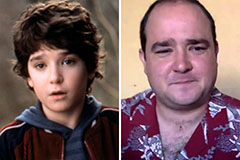
Recognizing Your Laundry Device
Laundry home appliances are intricate makers, designed with a variety of setups to efficiently tidy and care for different fabric kinds. The standard anatomy of these gadgets consists of a drum for holding garments, an agitator or impeller to aid remove dirt, a water pump for washing, and a motor for rotating and drying. Comprehending these basic parts and their functions can substantially boost the operation and long life of your laundry appliance.
Along with these basic parts, laundry devices are equipped with an array of sensors and control panels. These technology-based features guide the appliance's operation, dictating facets such as lots size, water temperature, and cycle size. Recognizing the objective and functionality of these controls is important-- not just for getting the very best efficiency out of your machine, however likewise for precisely identifying any kind of problems that may emerge. This knowledge allows users to troubleshoot effectively, conserving them time and possibly expensive specialist fixing costs.
Identifying Common Troubles with Your Device
Determining the underlying reason for a malfunction in your washing maker is the first step in locating a reliable repair. A valuable beginning point is the instruction manual that accompanies your home appliance, as it usually has a brochure of common issues, possible triggers, and suggested remedies. It is very important not to neglect standard services: see to it the device is linked to power which the electrical circuit hasn't been interfered with, which is a sensible first move prior to moving on to even more complex troubleshooting actions.
Understanding the important parts and procedures of your home appliance is useful. Having a grasp of the water shutoff, drainpipe pump, agitator, belt, and motor can considerably help in determining issues. In addition, focusing on any type of uncommon sounds, resonances, or performance problems can offer valuable info about possible problems. Consequently, being watchful and having a standard expertise of exactly how the device works can aid you make a preliminary assessment prior to seeking professional assistance.
Dealing With Water Filling Issues
Water filling issues in laundry appliances most typically stem from a malfunction within either the water inlet valve or the pressure switch. The valve controls the amount of water supplied to the device, while the pressure button informs the device when it has actually gotten to the suitable degree. If the valve is damaged or the pressure button is defective, it can lead to inaccurate water levels; either filling too much or insufficient.
One technique of repairing includes by hand filling the machine with water. If the equipment operates typically when by hand filled, the concern most likely lies within the water inlet valve. Additionally, if an excessive amount of water gets in the machine regardless of reaching the set degree, the pressure switch is most likely the perpetrator. It is important for homeowners to comply with the specific instructions and safety and security precautions provided by the manufacturer when examining these elements, or take into consideration enlisting the help of an expert.
Handling Drain Disruptions
Drain interruptions in a laundry appliance often materialize as water persistently staying in the appliance after completion of a cycle. This concern can come from different factors, including a stopped up or pinch-bent drain pipe, or a malfunctioning drain pump. An expertise of the usual culprits can confirm very useful in detecting the origin of the issue and crafting an effective solution. In extreme instances, where water exposure fails to decline message multiple rinses, prompt focus is critical to avoid prospective water damage or mold and mildew development.
Executing a methodical method to attend to drainage interruptions can generate effective end results. Beginning with an aesthetic evaluation of the drainpipe hose can assist recognize prospective clogs or physical damage. If straightening out a bent hose or removing a blockage does not deal with the issue, it might be essential to consider a malfunctioning drain pump, Laundry Aplliance Repair which might call for expert repair service or replacement. Furthermore, very carefully observing any kind of error codes shown on the appliance's console throughout the cycle can offer important info regarding the source of the disturbance. Consulting the appliance guidebook can help figure out these mistake messages, additionally helping in identifying the precise issue.
Repairing Non-Spinning Problems
Among the common concerns you could face with your washing home appliance is a non-spinning drum. This is typically a signs and symptom of a mechanical failing, usually with the electric motor, belts, or lid button. The motor is what powers your washing machine's spin cycle, and if it's burnt out or faulty, your washer will not spin. In a similar way, malfunctioning belts and lid buttons can hinder the drum's capacity to rotate.
Recognizing the precise root cause of the non-spinning concern can occasionally be challenging yet is an essential action in the direction of an efficient repair service. To diagnose the issue, initially examine the cover switch for indicators of wear or damage. A quick method of verification can be paying attention for a clicking sound as you open and close the lid. In the absence of this noise, the lid switch may need substitute. Busted belts or worn out motors may call for professional examination. Constantly keep in mind, security first; prior to examining any type of electric or mechanical component, always make sure that the washing machine is unplugged.
Resolving Washing Cycle Disruptions
Laundry appliance problems can expand beyond simple water filling up or draining problems. Incomplete cycles, where the machine stops suddenly throughout laundry, rinse, or spin cycles, can be specifically troublesome. This problem can stem from numerous sources, including faulty timers or control panel, malfunctioning cover switches, overheating electric motors, or faulty water level buttons. Resolving these underlying causes is vital to bring back the device's regular cycle.
To resolve this problem, it is essential to meticulously identify the trouble and recognize its underlying reason. Begin by examining the cover button to see if it is worn out and no more functioning effectively. Next, examine the water level switch for any kind of flaws that could cause incorrect signals being sent out to the machine. It is likewise essential to check the control board and timer of the device as any faults in these elements can cause the equipment quiting mid-cycle or falling short to start. It is very important to come close to fixing with care because of the participation of electricity, and if you are uncertain about any step, it is best to look for support from a certified expert.
Fixing Excessive Sound and Resonance Worries
Extreme sound and resonance from your washing device can show numerous possible problems, ranging from an out of balance tons to a malfunctioning component within the maker. Typically caused by unequal circulation of garments, vibrations can be easily dealt with by stopping the cycle and redistributing the lots within the drum. Nonetheless, if the sound and resonance persist, it could be as a result of worn or loose drive belts, drum bearings, or motor.
To diagnose accurately, a person could require to manually examine the discussed parts for any signs of wear or damage and replace any malfunctioning aspects promptly. If your appliance is continually making loud noises, in spite of your efforts at tons redistribution, it's highly recommended to consult an expert. A certified service technician will have the abilities and knowledge to identify and fix the root of the trouble, ensuring your device runs smoothly and silently. It's necessary to deal with these concerns immediately, as prolonged resonances or noises might cause additional damage to your home appliance or surroundings.
Dealing With Temperature Level Control Problems
Wrong temperature guideline in washing equipments can cause significant disruptions. This issue normally arises when the thermostat or heating element of the home appliance experiences technological concerns. The thermostat supervises of handling the water temperature level, while the heating element is responsible for heating up the water to the proper level for each and every cycle. Nonetheless, also a minor breakdown, caused by factors such as maturing parts, faulty connections, or a malfunctioning control panel, can hinder the effective efficiency of your equipment.
To address this, it's important to begin with fundamental troubleshooting. Begin with analyzing the cleaning device's temperature setup. It should represent the treatment tags on your washing-- too expensive or also reduced a temperature level can harm textiles and affect the overall cleaning efficacy. If the settings are in order but the temperature level appears wrong, expert support may be called for. Educated service technicians can embark on the required evaluations of the heating element and thermostat, perform requisite fixings, or recommend substitute parts as needed. It's very suggested not to attempt any inner repair services without professional guidance as it might result in unsafe situations and additionally nullify any kind of existing service warranties.

 Emilio Estevez Then & Now!
Emilio Estevez Then & Now! Bradley Pierce Then & Now!
Bradley Pierce Then & Now! Andrew Keegan Then & Now!
Andrew Keegan Then & Now! Soleil Moon Frye Then & Now!
Soleil Moon Frye Then & Now! Barbara Eden Then & Now!
Barbara Eden Then & Now!